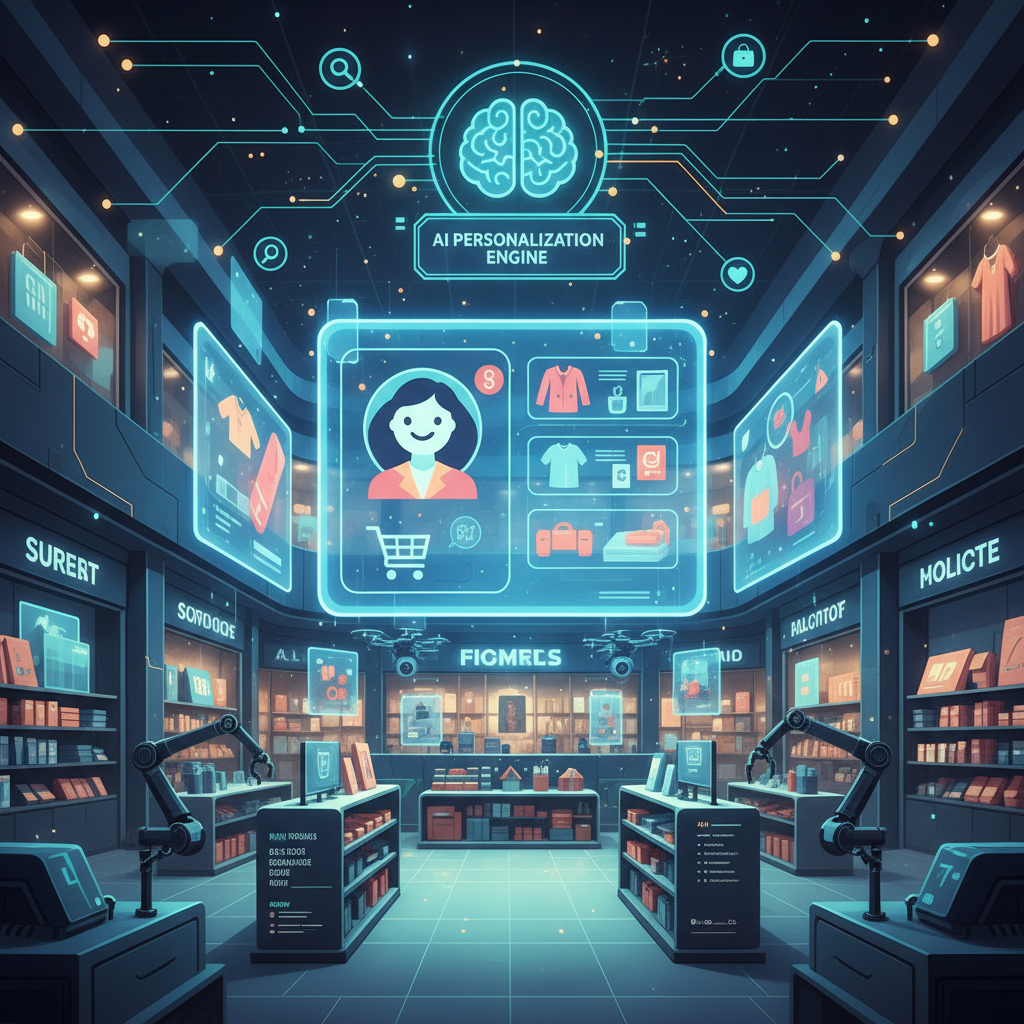When I first stepped into the world of business more than 25 years ago, retail was an art form built on instinct, relationships, and gut decisions. Merchants like us relied on seasonal cycles, experienced buyers, and intuition drawn from decades of trade. But today, what used to be instinct is being replaced by intelligence - artificial intelligence (AI) to be precise. The world of retail is undergoing an unstoppable transformation, and those who embrace AI are not just surviving, they're thriving across markets in India, the United States, the Middle East, Europe, Australia, and the UK.
The New Age of Personalization: Every Shopper is Unique
In the age of AI, personalization has become the defining competitive advantage. Machine learning models now study millions of data points - from browsing behavior, purchase history, and demographics to subtle preferences like time spent looking at certain items. AI takes all this and tailors experiences dynamically, creating one-to-one journeys for every customer.
One of the Indian retail platforms I advised recently used AI-driven recommendation engines to serve personalized product suggestions. Within three months, its average cart value increased by 42%. The shift wasn't just quantitative - customers felt understood, valued, and remembered. That's what modern personalization means: predictive empathy at scale.
In regions like the UK or Australia, where consumer loyalty is driven by experiential interaction, real-time personalization builds emotional trust. Meanwhile, in the Middle East and India, where digital adoption is booming, AI is turning first-time online shoppers into long-term customers by predicting their next purchase with confidence.
Dynamic Pricing: Turning Data into Real-Time Value
Not long ago, pricing used to be a fixed weekly or seasonal decision. But markets no longer move in predictable cycles. AI now empowers retailers to adjust prices in real time based on live data - demand patterns, competitor behavior, and even local weather trends. This capability has changed not just profitability but also customer fairness.
When I worked with a European apparel brand, they deployed an AI-powered pricing tool that monitored competitors and adjusted prices every hour according to margin thresholds. The results? 18% higher profit margins within a quarter and improved sell-through rates without discount dependency. The insight was clear: when AI makes decisions faster, humans spend more time creating meaningful strategies rather than fighting fires.
The Shift from Reactive to Predictive Retail
Artificial intelligence doesn't just automate, it anticipates. Retailers who once reacted to turbulence can now predict outcomes before disruptions occur. Whether it's a sudden dip in sales or changes in customer sentiment, AI models read these patterns before they fully materialize - giving leaders a priceless window to adapt strategies with agility.
AI-Generated Merchandising: Art Meets Algorithm
Merchandising, once the realm of creative intuition, has found a powerful partner in AI. Through visual recognition, sentiment mapping, and conversion data, AI systems can now suggest shelf layouts, product placements, and visual content that statistically converts better. In short, creativity now collaborates with computation.
One retail startup in Mumbai integrated AI merchandising across its online catalog. The system tested hundreds of layout combinations overnight and automatically optimized the highest-performing banner-product pairings by morning. Conversion rates jumped 29% within two weeks without any change in ad budget. That velocity of learning is simply impossible in traditional workflows.

Globally, I've observed similar results in brands across the United States and UAE - intelligent merchandising reduces effort, waste, and subjectivity. By understanding what moves the consumer emotionally and logically, AI enables retail storytelling that sells better and faster.
Loss Prevention and Analytics: Safeguarding the Future
Shrinkage and theft have long plagued retailers. Traditional CCTV and manual audits only cover surface-level risks. But today, AI-driven video analytics and transaction anomaly detection tools predict potential loss events before they occur. These systems flag unusual patterns - a sudden spike in returns, abnormal traffic in specific aisles, or mismatched inventory records - allowing teams to act before financial damage is done.
In one Middle Eastern supermarket chain I consulted, AI-based monitoring identified fraudulent refund patterns totaling nearly $80,000 in just 10 days - something manual processes had missed for months. AI doesn't accuse; it assists with precision, ensuring prevention replaces reaction.
"The true power of AI in retail is not speed or automation - it's visibility. What business leaders can see clearly, they can improve consistently."
- Sandeep Mundra
Automated Inventory Models: The End of Guesswork
Inventory decisions often determine whether a retail operation thrives or stalls. Yet, across decades, forecasting depended on spreadsheets and assumptions. With AI, forecasting is now continuous and adaptive. Machine learning models update projections daily, balancing inventory with real-time sales, supplier delays, and regional demand fluctuations.
A prominent British retailer implemented predictive inventory AI integrated with IoT sensors. The result? 93% accuracy in restock timing, sharply reducing dead stock and lost revenue. Equally impressive were employees' experiences: less firefighting, more focus on innovation.
Why Traditional Workflows Are Becoming Obsolete
Traditional retail workflows were designed for a slower, silo-driven world. Decision-making often lagged behind data; teams functioned reactively; and systems were built around physical, not digital, cues. Today, customer behavior moves faster than any human team can track manually. Manual systems simply cannot keep pace with real-time complexity.
Moreover, human biases often resulted in misallocation of resources. AI, by contrast, thrives on impartial evidence and adaptability. Its agility makes traditional structures appear rigid and outdated. We are reaching a point where not adopting AI soon will be a greater risk than deploying it too early.
How Brands Can Adopt AI Effectively
Integration must begin with clarity, not complexity. AI adoption succeeds when organizations align strategic goals with specific retail pain points. Whether you operate a fashion boutique in Mumbai or a department store in London, successful AI use starts with understanding what you want it to achieve - personalization, optimization, or automation.
- Start with one focused use case - predictive pricing, chatbots, or demand forecasting.
- Ensure data hygiene - clean datasets drive better intelligence.
- Upskill your team - combine domain expertise with technical literacy.
- Measure outcomes not by technology adoption, but by improved profitability and customer experience.
A Personal Reflection: Lessons from Two Decades of Change
More than once, I've seen the hesitation that comes before transformation. I remember consulting for a traditional textile chain in Rajasthan that feared automation would erase its heritage. Instead, AI insights helped the company customize fabric trends and scale production intelligently without compromising culture. Sales grew 35% year-on-year, while craftsmen gained a new sense of purpose.
Another project in California illustrated that innovation isn't about replacing humans - it's about enabling them to make bolder, faster, more confident decisions. Their AI-powered inventory tracking system reduced errors by 90% and freed employees to focus on design and brand storytelling. Creativity flourished once the manual burden was lifted.
Conclusion: Intelligence Is the New Retail Advantage
Across continents and categories, one truth is evident: AI is no longer the future of retail - it's the present that defines relevance and profitability. Businesses that align leadership, culture, and systems around AI-driven agility will emerge as the resilient ones of this decade.
Artificial intelligence may be a technology, but it's also a teacher. It reminds every business leader - including me - that data without insight is noise, and insight without action is wasted potential. The road ahead belongs to intelligent commerce, where technology serves people, decisions are data-enhanced, and every shopping experience feels personal yet globally connected.









